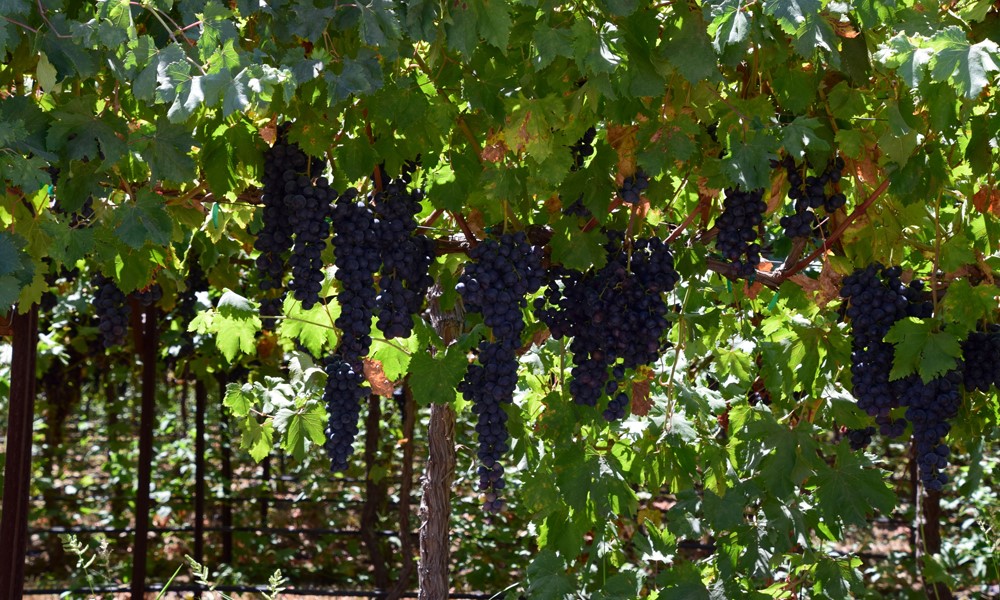Financing Permanent Plantings and Land Development

The value and impact of permanent plantings on the California economy is significant. More than three quarters of the U.S. fruit and nut supply originates from the orchards of the Golden State, with 17.1 million tons of fruit and nuts produced in 2021 valued at $22.2 billion.1
As the following stats about California agriculture demonstrate, ongoing investment from lenders in permanent plantings through development loans will be crucial to the continued success of fruit and nut production.
- Grapes and almonds are California’s top two and three ag products, respectively, each pulling in more than $5 billion in cash receipts annually.1
- Over the past decade, the growth in acreage devoted to almond cultivation has exploded, from 820,000 acres in 2012 to 1.35 million in 2022.2
- California grape production in 2021 includes 1 million tons apiece of raisin grapes and table grapes, and 3.6 million tons of wine grapes. On average, California grapes pull a value of $835 a ton.1
- In 2022, multiple tree crops realized notable boosts in production, including olives (49%), sweet cherries (47%), apricots (30%), pears (27%) and prunes (25%).1
- California produces nearly three-quarters (74%) of the value of the U.S. citrus crop (which includes oranges, lemons, tangerines and limes).1
- Between 2019-2021, the value of California’s pistachio output realized a nearly 40% increase, from $2.08 billion to $2.9 billion.1
Understanding the risks of development loans for permanent plantings
Permanent plantings are unique in the ag financing space because these require development loans to plant and establish the next generation of trees and vines. Whether the producer is looking to refresh aging stock or expand the operation, the speculative nature of these loans means they carry risk, and the upfront investment is significant.
Newly planted trees and vines require anywhere from 4-7 years to reach maturity. During that time, much can happen to young, developing crops and the business itself, impacting the borrower’s ability to repay the loan.
Specifically, outdoor environmental conditions can harm the developing crop, including exposure to devastating drought conditions, insects, frost and severe weather. Economic challenges, including falling commodity prices, inflation, decreased revenue and obstacles to global exports, can affect the producer’s ability to repay the development loan.
Factors considered in underwriting permanent planting loans
Because of the unique risks in establishing new trees and vines, underwriting development loans for permanent plantings requires analysis of several aspects of the business, including:
- Cash flow
- Long-term viability of the operation.
- The real estate fronted as collateral
- Percentage of the operation’s acreage already in production
- Appraisal that assesses “as is” value along with anticipated value once the permanent plantings reach full production
- A water plan or budget, including a detailed list of water sources.
Tailored financing solutions for permanent plantings
While assessing the risk is critical to the lending process, development loans require a structure that meets the needs of the farmers, calling for terms that leverage their ability to expand operations and limit disruption to their cash flow. Ag lenders frequently offer a short-term interest-only loan with the option to extend and refinance at the end of the term.
However, tree crop farmers seek streamlined lending and leasing solutions that put them in a stronger financial position, such as long-term loans and agreements for permanent plantings. The short-term interest-only loan product from Agri-Access is structured based on the maturity and economic viability of each unique crop type. Locking in a long-term loan while bypassing the risks and costs of refinancing in three years provides a greater level of stability and predictability to a farmer’s working capital. Not only that, but they get a wider bandwidth to devote more time and resources to focus on other areas of the enterprise.
Grow your lending power
To expand your development loan offerings for permanent plantings without taking on more risk, secondary lending can provide a host of solutions. A participation loan from Agri-Access can provide the longer terms farmers seek to ramp up production and grow their business.
Simply reach out to a relationship manager any time to get started.
- California Department of Food and Agriculture | California Agriculture Statistics Review 2021-2022
- NASS/USDA | 2022 California Almond Acreage Report
